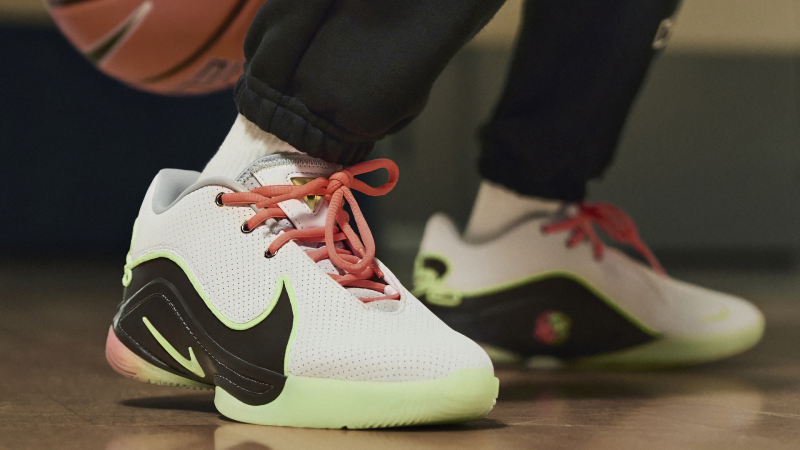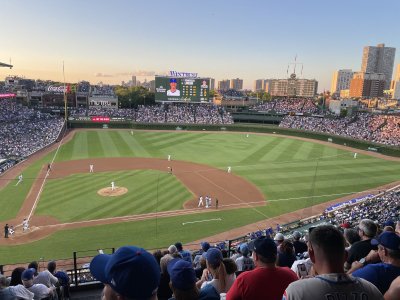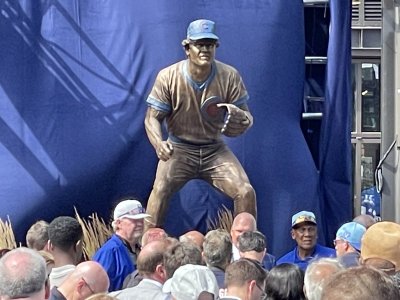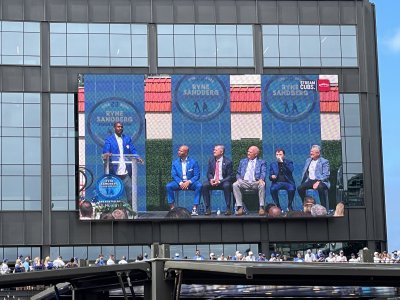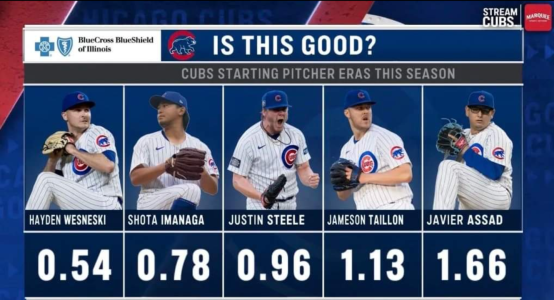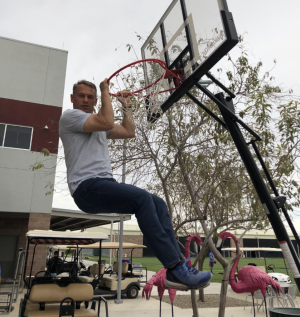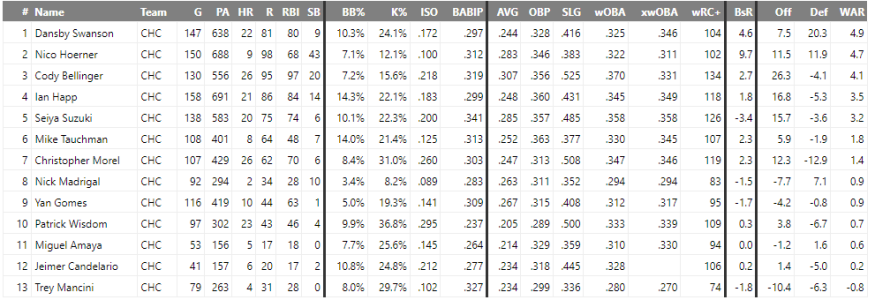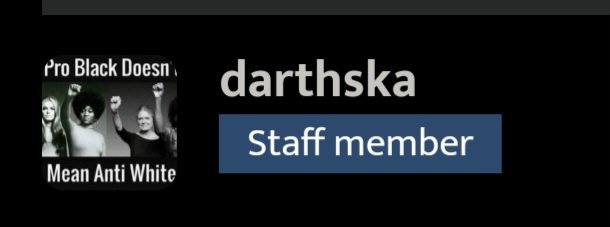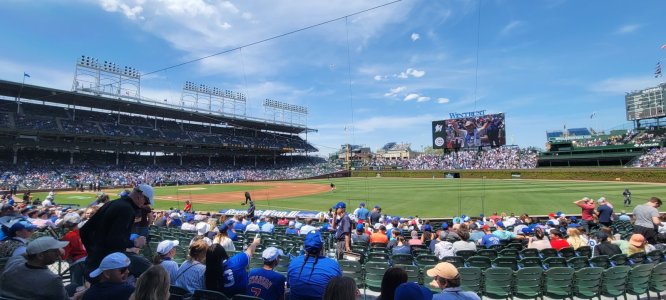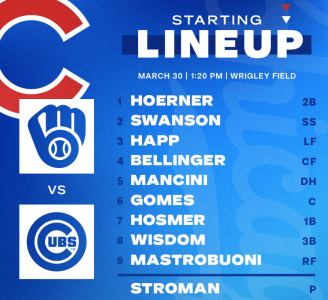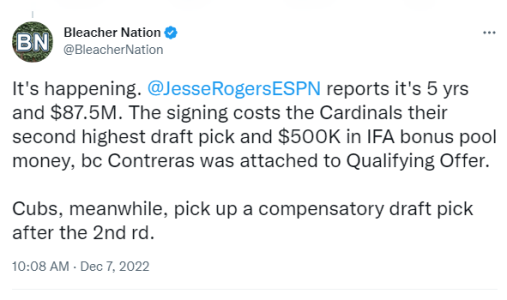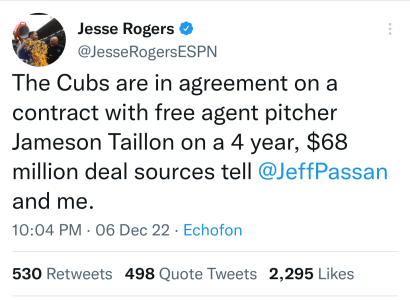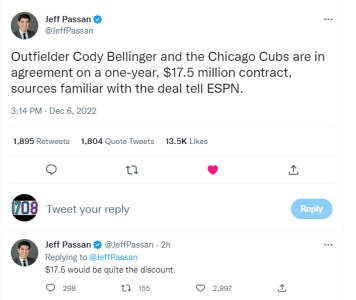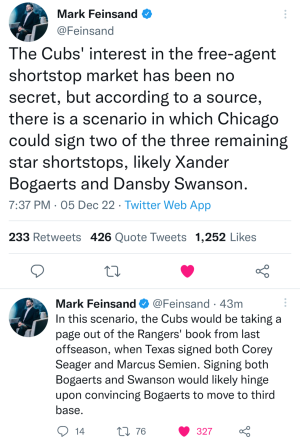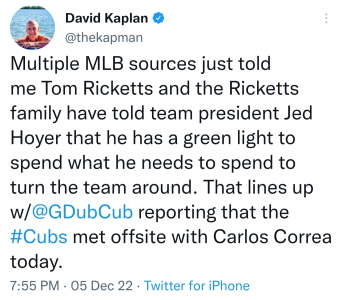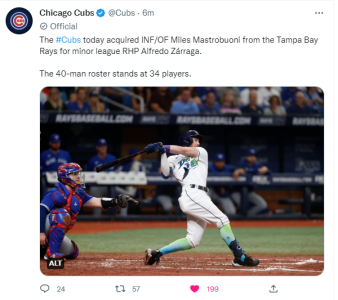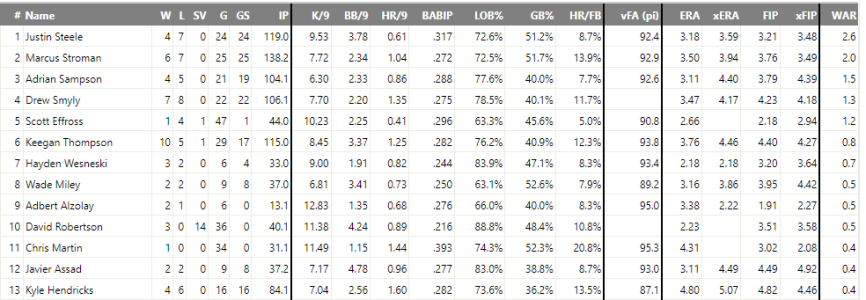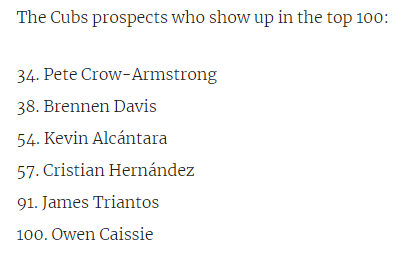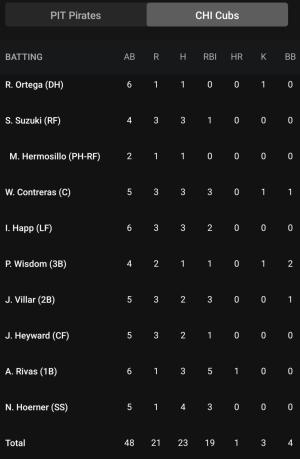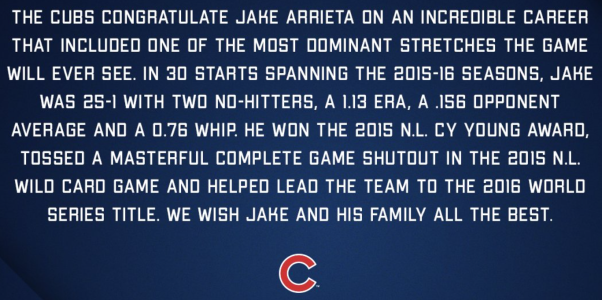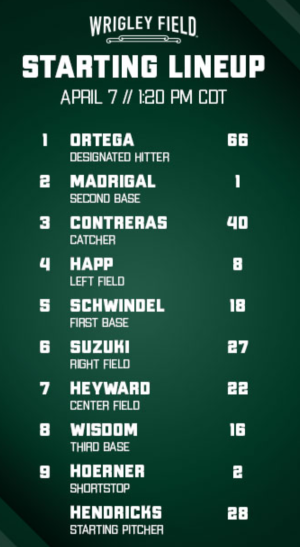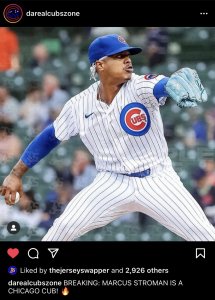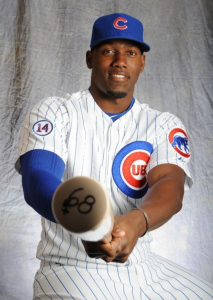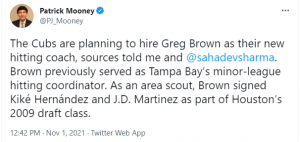QUICK PRIMER ON GRADE MEANINGS
Grade A prospects are the elite. In theory, they have a good chance of becoming stars or superstars. Theoretically, most Grade A prospects develop into stars or at least major league regulars, if injuries or other problems don’t intervene. Note that is a major "if" in some cases.
Grade B prospects have a good chance to enjoy successful careers. Some will develop into stars, some will not. Most end up spending several years in the majors, at the very least in a marginal role.
Grade C prospects are the most common type. These are guys who have something positive going for them, but who may have a question mark or three, or who are just too far away from the majors to get an accurate feel for. A few Grade C guys, especially at the lower levels, do develop into stars. Many end up as role players or bench guys. Some don’t make it at all.
Finally, keep in mind that all grades are shorthand. A Grade C prospect in rookie ball could end up being very impressive, while a Grade C prospect in Triple-A is likely just a future role player.
1) Eloy Jimenez, OF, Grade A-: Age 19, breakout season in Low-A at .329/.369/.532, 40 doubles, 14 homers; can still be overly aggressive at times but he’s cleaned up his swing mechanics and put his tools (60 power, 60 arm, 55 speed) to work; signed out of Venezuela in 2013 for $2,800,000, which could end up being a bargain if he continues to progress like this; should hit for both power and average down the line. ETA: 2020.
2) Dylan Cease, RHP, Grade B+: Age 20, sixth round pick in 2014 although would have been first-rounder if not for Tommy John surgery; fully recovered now; 2.22 ERA in 45 innings in Northwest League with 66/25 K/BB and a mere 27 hits allowed; works in mid-90s and has touched 100; also has excellent curveball and workable change-up; issues now are building up innings stamina and finalizing polish on the change-up; could turn into an ace. ETA: 2020.
3) Trevor Clifton, RHP, Grade B+/B: Age 21, 12th round pick in 2013 from high school in Tennessee; 2.72 ERA in 119 innings in High-A with 129/41 K/BB, 97 hits; doesn’t throw as hard as Cease with fastball in 92-95 range but has a very good curveball/change-up to back it up and throws strikes; number three starter projection, don’t overlook him. ETA: late 2018.
4) Ian Happ, 2B, Grade B+/B: Age 22, first round pick in 2015; hit .279/.365/.445 with 15 homers, 16 steals, 68 walks, 129 strikeouts in 488 at-bats between High-A and Double-A; polished hitter with solid-average power who should provide high OBPs; performed adequately at second base after being drafted as an outfielder; could use another year to iron out the fielding. ETA: 2018.
5) Albert Almora, OF, Grade B: Age 22; hit .303/.317/.416 in 320 at-bats in Triple-A, .277/.308/.455 in 112 at-bats in the majors; there’s some question about his rookie eligibility for 2017 but he is under the limit on at-bats so I will include him; outstanding defensive outfielder and will hold a roster spot for years based on the glove alone, main question going forward is power development; impatient and OBP will be very dependent on batting average, so more power would be helpful to make him a fully productive bat; most likely a better real-life player than a fantasy one. ETA 2017.
6) Oscar De La Cruz, RHP, Grade B: Age 21, signed out of Dominican Republic in 2012; pitched 39 innings between rookie ball and Midwest League with 3.00 ERA, 51/11 K/BB; the strikeouts are not lying; fastball into mid-90s when healthy with curveball and change-up both showing above-average potential; control is good for a young power pitcher; assuming good health I expect a major breakthrough in ’17. ETA 2019.
7) Mark Zagunis, OF, Grade B-: Age 23, third round pick from Virginia Tech in 2014; hit .288/.384/.469 with 10 homers, 52 walks, 78 strikeouts in 358 at-bats between Double-A and Triple-A; excellent strike zone judgment and power improved in ’16; average defensive tools; the bat is the key attraction here; may wind up as trade bait. ETA: 2017.

Jeimer Candelario, 3B, Grade B-: Age 23, hit .283/.376/.464 between Double-A and Triple-A with 13 homers, 39 doubles, 70 walks, 99 strikeouts in 474 at-bats; looks blocked in Chicago but would make great trade bait as a switch-hitter with OBP ability, power potential, and above-average defense at third base; ready for a trial now but where? ETA: 2017.
9) Duane Underwood, RHP, Grade B-/C+: Age 22, 4.32 ERA in 73 innings between Double-A and lower-level injury rehab work, 62/35 K/BB; fastball up to 96 when healthy, both curveball and change-up flash plus but feel for pitching comes and goes; strikeout rates have not matched the stuff and he’s been dogged with nagging forearm/elbow soreness the last two seasons; talk increasing that he may wind up in bullpen. ETA 2018.
10) Victor Caratini, C-1B, Grade B-/C+: Age 23, hit .291/.375/.405 with 54 walks, 80 strikeouts in 412 at-bats in Double-A; another Cubs hitter with sound strike zone judgment and OBP ability; lacks big power; threw out 27% of runners but with very low passed ball and error rates, typical for him, can also play first base well; probably a very good role player rather than a long-term regular but that has a lot of value. ETA late 2017.
11) Donnie Dewees, OF, Grade B-/C+: Age 23, second round pick in 2013 from North Florida; hit .284/.338/.416 with 25 doubles, 14 triples, five homers, 31 steals; runs very well and a very successful base stealer, also an above-average defensive outfielder despite weak throwing arm; may have more raw power than he’s shown so far. ETA: 2019.
12) Jose Albertos, RHP, Grade B-/C+: Age 18, signed out of Mexico in 2015; threw four innings in rookie ball without giving up a run while fanning seven, but was sidelined quickly with arm soreness; can hit 96-97 MPH and already has an above-average breaking ball and change-up; difficult to rank due to young age, injury concern, and lack of data but his ceiling is very high. Could move very rapidly if healthy. ETA: 2021.
13) Thomas Hatch, RHP, Grade B-/C+: Age 22, Chicago’s top pick in 2016 draft (third round) from Oklahoma State; did not pitch after signing to spare his arm, went 9-3 in 19 starts in college with 2.14 ERA and 112/33 K/BB in 130 innings, a very heavy workload after coming off elbow injury in ’15; 90-96 MPH fastball with good low-zone action, also has above-average slider and a decent change-up; potential workhorse strike-thrower: ETA 2019.
ANALYST NOTE: Spots 14-20 on this list are quite fungible so don’t worry too much about exact ordering and look at it like tiers. I focused here mostly on pitchers.
14) Wladimir Galindo, 3B, Grade C+: Age 20, signed out of Venezuela in 2013, hit .243/.337/.462 with nine homers, 33 walks, 81 strikeouts in 247 at-bats in pitching-oriented Northwest League, good production for park/league environment; above-average power and throwing arm but glove needs more work, though he did make progress cutting down on errors; high upside/high risk sleeper bat. ETA: 2021.
15) Rob Zastryzny, LHP, Grade C+: Age 24, second round pick in 2013, posted 4.31 ERA in 136 innings between Double-A and Triple-A with 119/51 K/BB; promoted to majors and was stellar in September, posting 1.13 ERA in 16 innings with 17/5 K/BB, looking dominant in bullpen; fastball up to 94 along with a curve, slider; can hit all velocity spots between 74 and 94; unsure what his role will be but he’s ready for a trial. ETA: 2017.
16) Ryan Kellogg, LHP, Grade C+: Age 22, fifth round pick in 2015 from Arizona State; posted 3.03 ERA in 131 innings in Low-A with 107/26 K/BB, 115 hits and was very sharp down the stretch; best-known for pitchability and command. I thought his velocity could increase in ’16; that did not happen but there’s still a chance it could, and even with his current skill set he could be a fine number four starter. ETA: 2019.
17) Erling Moreno, RHP, Grade C+: Age 20, signed out of Colombia for $650,000 in 2013; posted 1.88 ERA with 55/9 K/BB in 62 innings combined between rookie ball and Northwest League, 47 hits; heavy ground ball pitcher with sinker and plus curveball, throws strikes; breakout potential for 2017 which is why I am putting him here. ETA: 2020.
1

Zach Hedges, RHP, Grade C+: Age 24, 26th round pick in 2014 from Azusa Pacific, posted 2.75 ERA in 144 innings between High-A and Double-A with 95/27 K/BB, 2.07 GO/AO; heavy sinker has been clocked as high as 94, strikeout rate isn’t excellent but he throws strikes, gets grounders; could be a fourth starter or a bullpen asset. ETA: 2018.
19) Jose Paulino, LHP, Grade C+: Age 21, signed out of Dominican Republic in 2011; slow developer until 2016 when he posted a 1.92 ERA, 69/13 K/BB in 75 innings between Northwest and Midwest Leagues, 69/13 K/BB, just 55 hits; Midwest League sources liked his 90-96 MPH fastball; slider is erratic but can be excellent, dominant when his command is on. Like Moreno, he hasn’t received much notice outside of Cubs circles but that can change. ETA: 2020.
20) D.J. Wilson, OF, Grade C+: Age 20, fourth round pick in 2015 from high school in Ohio, hit .257/.320/.371 in Northwest League with 20 walks, 56 strikeouts, 21 steals in 245 at-bats; no power yet but may develop some along Adam Eaton lines despite 5-8 height; excellent running speed (65 or 70) and uses it well, already a good fielder; needs to improve OBP abilities. ETA: 2021.
OTHER GRADE C+: All of these players have a case to rank in spots 14 to 20. I don’t have space for full write-ups but will answer any questions about them in the comments thread.
Bryan Hudson, LHP; Chad Hockin, RHP; Preston Morrison, RHP; Isaac Paredes, INF; Jose Rosario, RHP; Carlos Sepulveda, 2B; Jake Stinnett, RHP; Christian Villanueva, 3B; Ryan Williams, RHP; D.J. Wilson, OF; Chesny Young, INF
GRADE C prospects: Corey Black, RHP; Charcer Burks, OF; Bailey Clark, RHP; Jacob Hannemann, OF; P.J. Higgins, C; Pierce Johnson, RHP; Eddy Martinez, OF; Ryan McNeil, RHP; Felix Pena, RHP; Chris Pieters, 1B-OF; Ian Rice, C; Michael Rucker, RHP; Carson Sands, LHP; Wyatt Short, LHP; Justin Steele, LHP; Jen-Ho Tseng, RHP; Kyle Twomey, LHP
Despite recent graduations the Cubs system remains very deep; there are others who could rate and they have a lot more C+ prospects who could blossom into more. The Cubs have put a lot of effort into digging up pitching the last couple of years and this could bear fruit soon. There’s certainly plenty of depth for them to trade with.


 Jeimer Candelario, 3B, Grade B-: Age 23, hit .283/.376/.464 between Double-A and Triple-A with 13 homers, 39 doubles, 70 walks, 99 strikeouts in 474 at-bats; looks blocked in Chicago but would make great trade bait as a switch-hitter with OBP ability, power potential, and above-average defense at third base; ready for a trial now but where? ETA: 2017.
Jeimer Candelario, 3B, Grade B-: Age 23, hit .283/.376/.464 between Double-A and Triple-A with 13 homers, 39 doubles, 70 walks, 99 strikeouts in 474 at-bats; looks blocked in Chicago but would make great trade bait as a switch-hitter with OBP ability, power potential, and above-average defense at third base; ready for a trial now but where? ETA: 2017.
